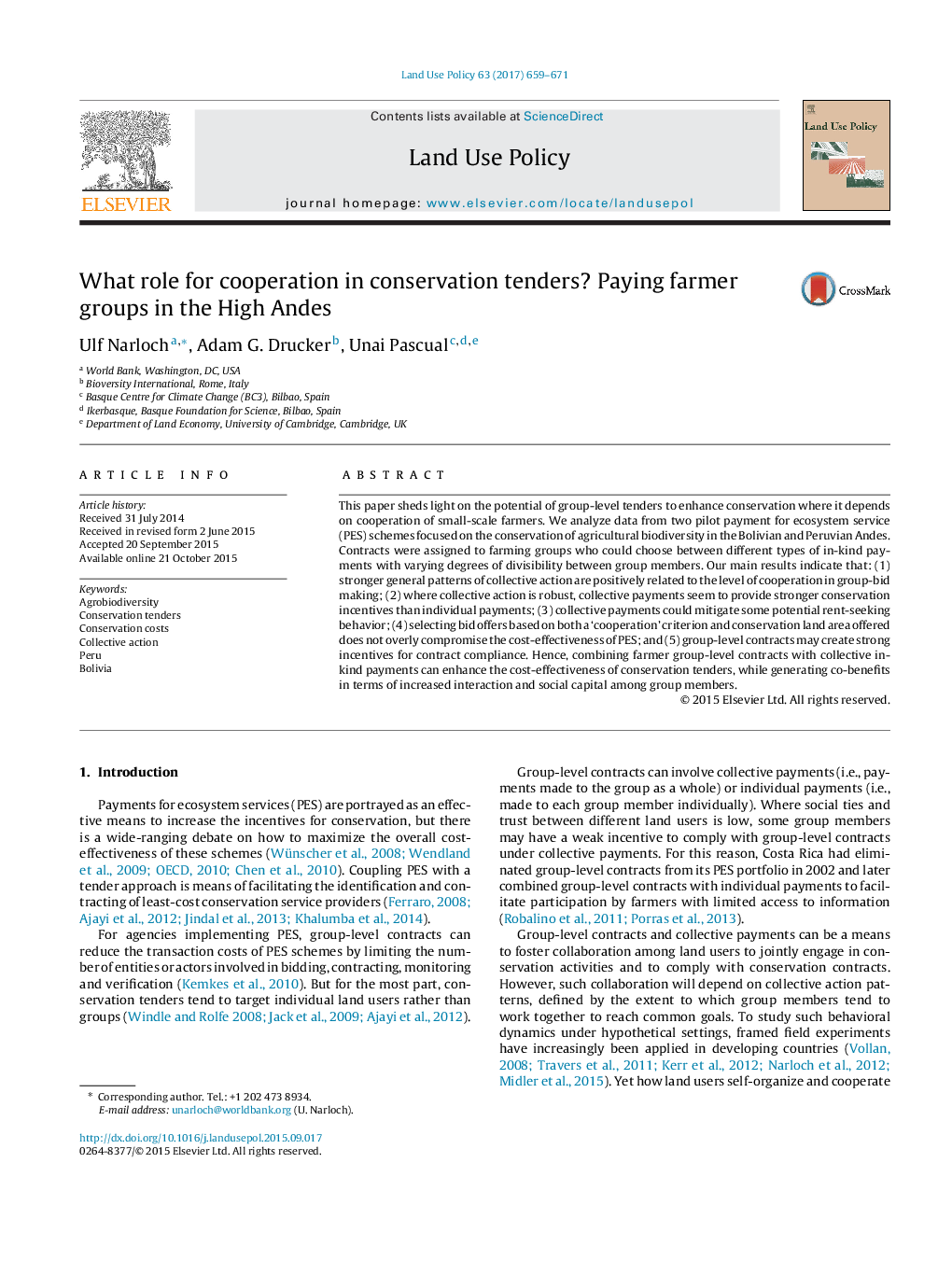| Article ID | Journal | Published Year | Pages | File Type |
|---|---|---|---|---|
| 6461109 | Land Use Policy | 2017 | 13 Pages |
â¢Collective action patterns relate to cooperation in group-bid making.â¢Conservation incentives can be greater under collective than individual payments.â¢Collective payments could mitigate some potential rent-seeking behavior.â¢A cooperation selection criterion does not need to overly compromise cost-effectiveness.â¢Group-level contracts may create incentives for contract compliance.
This paper sheds light on the potential of group-level tenders to enhance conservation where it depends on cooperation of small-scale farmers. We analyze data from two pilot payment for ecosystem service (PES) schemes focused on the conservation of agricultural biodiversity in the Bolivian and Peruvian Andes. Contracts were assigned to farming groups who could choose between different types of in-kind payments with varying degrees of divisibility between group members. Our main results indicate that: (1) stronger general patterns of collective action are positively related to the level of cooperation in group-bid making; (2) where collective action is robust, collective payments seem to provide stronger conservation incentives than individual payments; (3) collective payments could mitigate some potential rent-seeking behavior; (4) selecting bid offers based on both a 'cooperation' criterion and conservation land area offered does not overly compromise the cost-effectiveness of PES; and (5) group-level contracts may create strong incentives for contract compliance. Hence, combining farmer group-level contracts with collective in-kind payments can enhance the cost-effectiveness of conservation tenders, while generating co-benefits in terms of increased interaction and social capital among group members.
